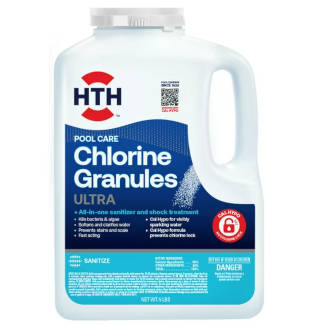Bleach vs. Calcium Hypochlorite for Water Disinfection
Bleach is great for disinfecting questionable water, but it has a drawback in that it doesn't last a real long time. After only six months, it starts to degrade by about 20% a year. So, if you have a few bottles of it stored away, you better check to see how long you've had them. Odds are, they aren't going to be good much longer.

A far better alternative is to use calcium hypochlorite, commonly sold as pool shock. It is a dry powder and will last a long, long time as provided you keep it dry.

Here are the instructions given by the Environmental Protection Agency on their website. Please note this is essentially a two-step process. First you make the disinfecting solution, then add that to the water you want to cleanse. You do not drink the disinfecting solution!
"Add and dissolve one heaping teaspoon of high-test granular calcium hypochlorite (approximately ¼ ounce) for each two gallons of water, or 5 milliliters (approximately 7 grams) per 7.5 liters of water. The mixture will produce a stock chlorine solution of approximately 500 milligrams per liter, since the calcium hypochlorite has available chlorine equal to 70 percent of its weight. To disinfect water, add the chlorine solution in the ratio of one part of chlorine solution to each 100 parts of water to be treated. This is roughly equal to adding 1 pint (16 ounces) of stock chlorine to each 12.5 gallons of water or (approximately ½ liter to 50 liters of water) to be disinfected. To remove any objectionable chlorine odor, aerate the disinfected water by pouring it back and forth from one clean container to another."
